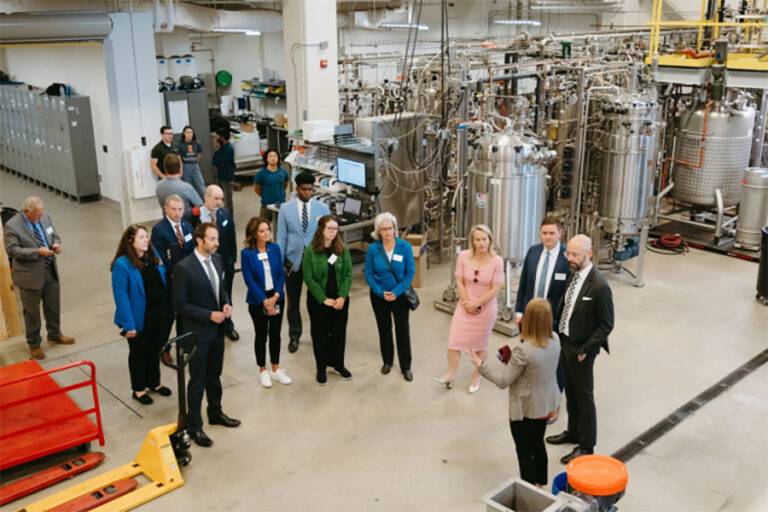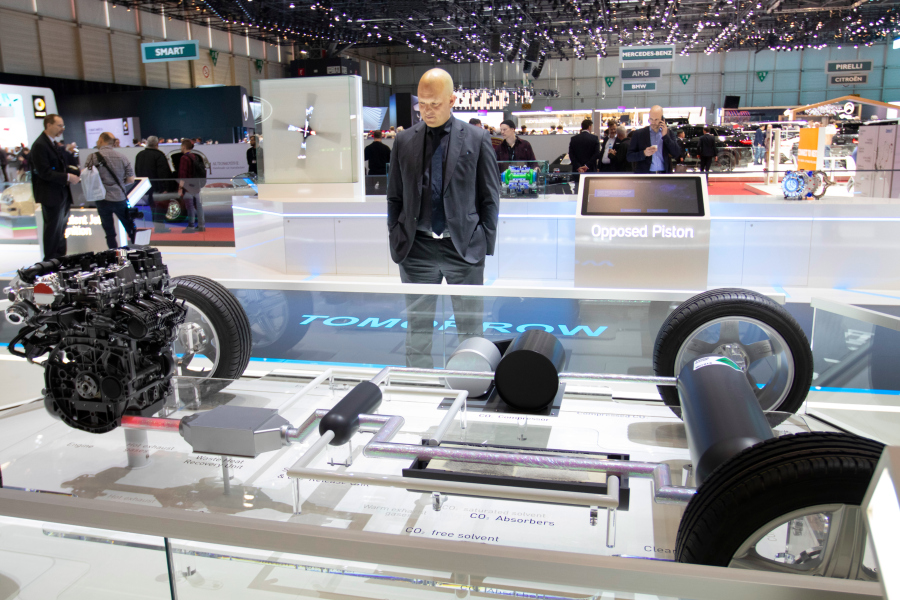
As even the briefest look at statistics from the International Energy Agency (IEA) and other organisations will show, reports of the death of the internal combustion engine (ICE) have been greatly exaggerated.
According to nearly all forecasts, the technology will continue to dominate the world’s roads until 2040 at the earliest, especially for heavier vehicles. In this context, more efficient ICEs, new fuel formulations and innovative engine designs all have a critical role to play in reducing CO2 emissions from the transport sector.
Taking the lead in this concerted effort is the world’s largest energy company, Saudi Aramco. Saudi Aramco has teamed up with vehicle manufacturers and research scientists around the world to develop game-changing technologies for the next generation of the internal combustion engine.
Buzz speaks with Amer Ahmad Amer, Ph.D., Transport Chief Technologist, Research & Development Center, Saudi Aramco.
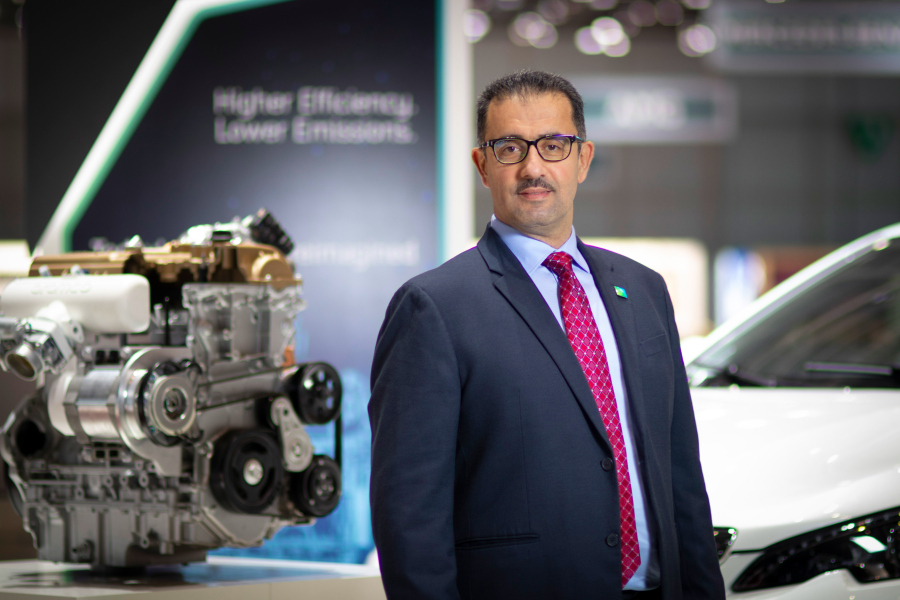
Why did Aramco exhibit at the Geneva International Motor Show this year?
This was the second time that we presented at a major auto show. Last year we were in Detroit for North American Auto Show. This year in Geneva we showcased four technologies to share our company’s commitment to environmental sustainability: Gasoline Compression Ignition, Opposed-Piston, Turbulent Jet Ignition and On-board Carbon Capture technology. By being in these shows we can share our views on the future of transport and highlight the role of the ICE in enabling thriving and emerging economies.
How large is your research team in the transport innovation?
Given that a significant share of our products go to transport fuels, we are committed to reducing their environmental impact through innovations in engine architectures, advanced combustion modes, new fuel, after-treatment and hybridization solutions.
We started in 2007 with about eight people. We now have about 85 people in multiple locations, including Detroit, Paris, Dhahran and more recently Beijing, so our research network has grown significantly.
Much of what we do is through collaboration. We realize that we cannot do everything by ourselves. Our intent is to catalyze. Sometimes we work on early concept prove-out of promising technologies which are expected to be introduced in the market in the next 5-10 years. We also have a wide spectrum of technologies and collaborations that cover a wide network of transport stakeholders.
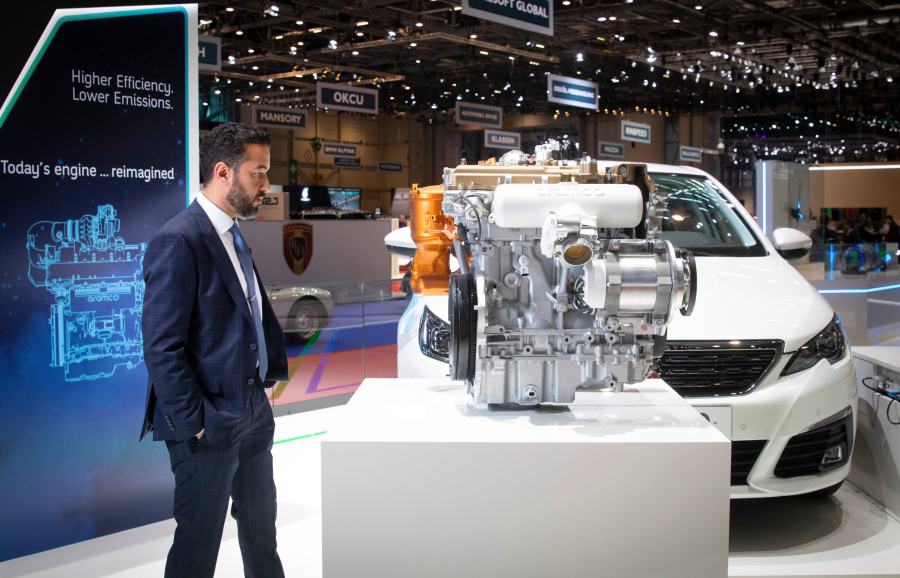
How closely do you work with car makers?
PSA Group is one of our partners. We work with them on multiple technologies, one of which we have managed to integrate into the Peugeot 308 displayed in Geneva. We took an existing engine, made hardware changes and implemented a low-carbon fuel. Toward the end of the exercise with minimal hardware changes, we were able to realize 84 grams of CO2 per kilometer, which is 17% below the 2021 European fleet average target for new vehicles. We are happy to work with other European partners. We are not here to make engines or cars, but to accelerate and catalyze much of the work by engine and vehicle manufacturers.
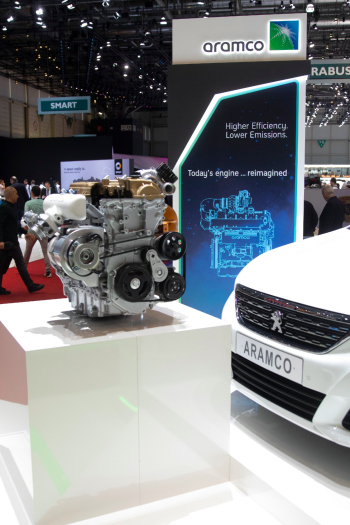
How much of a threat are electric vehicles to oil demand?
We don’t see it that way. We see electric vehicles as part of the solution, but not the answer. We don’t think electrification is a silver bullet. We think there are a number of solutions that the market needs if we are serious about reducing CO2.
Furthermore, electrification is specific to light-duty vehicles because of the required battery size on board a vehicle. Energy demand for light-duty vehicles will either decrease slightly between now and 2030 or plateau over the same period.
The real demand is coming from heavy-duty trucks, from aviation and from marine. There are going to be more internal combustion engines in many parts of the world, so the best way to reduce emissions is to tackle their efficiency.
What is Gasoline Compression Ignition (GCI) technology?
Most of today’s compression ignition engines are powered by diesel, which produces high levels of soot and NOx emissions. In many ways compression ignition is the right technology with the wrong fuel—i.e. we need to change just the fuel, while keeping the compression-ignition process. What GCI offers is the opportunity to eliminate emissions with a more volatile fuel such as gasoline. You can retain efficiency while reducing emissions significantly. You are talking about a 25 to 30% improvement in fuel consumption and CO2 emissions. GIC enables ultra-low emissions but with the efficiency of diesel engines.
How can Turbulent Jet Ignition (TJI) improve fuel efficiency?
This is another technology that we are looking at for gasoline engines. It has been implemented in F1-type cars, but not in production models. TJI mixes a small quantity of fuel with air in a very small cavity (pre-chamber) which is combusted by a spark plug collocated within the cavity. The advantage is that combustion is now happening under very lean conditions, with a small quantity of fuel compared to the amount of air. The fuel consumption goes down significantly and the efficiency increases.
We are currently working with technology providers and are hoping to demonstrate these technologies in two years. We are working on a practical version that automakers could actually use as a drop-in—something you could put in a car with minimal adaptation.
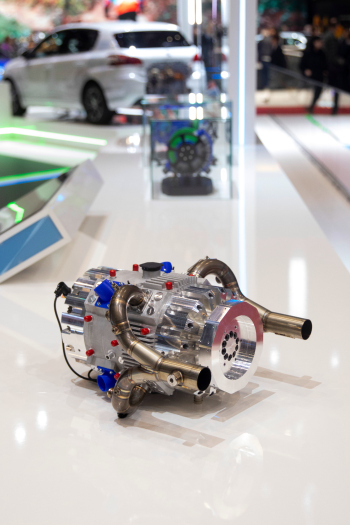
What are the advantages of Opposed Piston Engines?
This design allows you to double or quadruple the power density of an engine. In a conventional arrangement, cylinders are arranged in a row. A linear motion has to be converted into a rotational motion. The opposed piston design uses two pistons per cylinder, working in opposite reciprocating motion. This eliminates the need for a cylinder head and moving parts, so it reduces friction and heat loss. That energy is now converted to use, in essence.
We are working with partners such as Achates Power in San Diego and INNEngine in Spain to advance these concepts and make them more likely to go to production. We expect to see the technology in production in the next 7-10 years.
What is the potential of Mobile Carbon Capture?
We are focused on enabling technologies that would reduce CO2 emissions, either by improving the efficiency which would result in CO2 reduction or by capturing CO2 onboard a vehicle.
We have developed a couple of prototypes so far for mobile carbon capture. The first was in a Ford F-250 vehicle. We managed to capture 10% of the CO2 coming out of the vehicle, compress it and store it onboard. We then decided to miniaturize this technology and managed to get it to one-eighth the size.
We put it in a Toyota Camry in the second prototype, where we managed to capture about 25% of the CO2. Now we have another concept that will enable us to capture up to 40% of the CO2 generated. This will be in a Class A trailer truck. We will demonstrate that by the end of the second quarter this year. We know this won’t see the market tomorrow. But it really demonstrates what is possible for the industry.
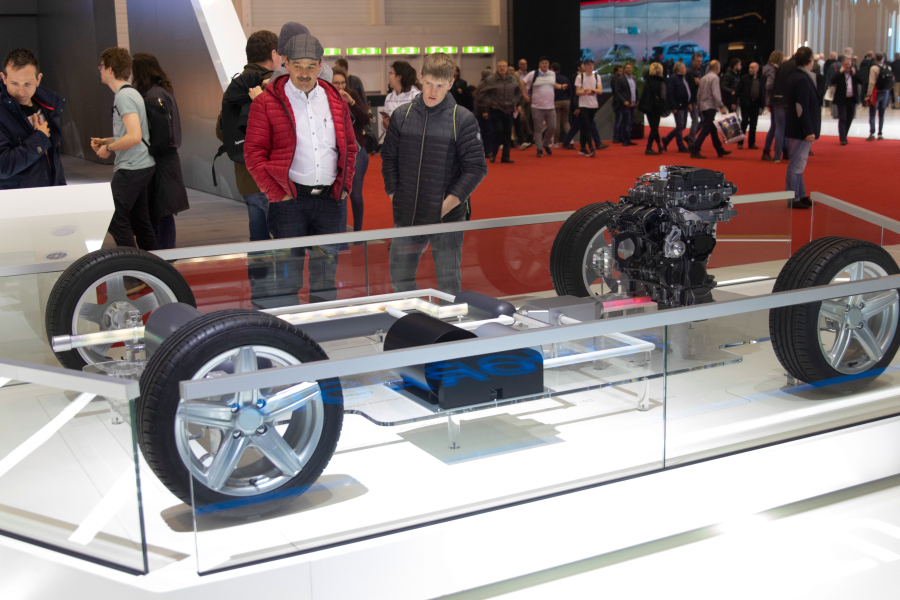
How important is ICE innovation to Saudi Aramco in general?
We believe that internal combustion engines have a lot of room for efficiency improvement. Only a technology-agnostic approach will result in meaningful CO2 reductions: we must regulate CO2 not the technology.
There are exciting new technologies that can help deal with emissions, either by reducing them or capturing them onboard, and many technology providers are currently working on these concepts. At Saudi Aramco, we understand that multi-stakeholder engagement is necessary to bring about sizable CO2 reductions. That is why we are working hard with global partners in the car industry, academia and technology sectors. Together, we can achieve the technology breakthroughs that will enable a new era in transport![]()









